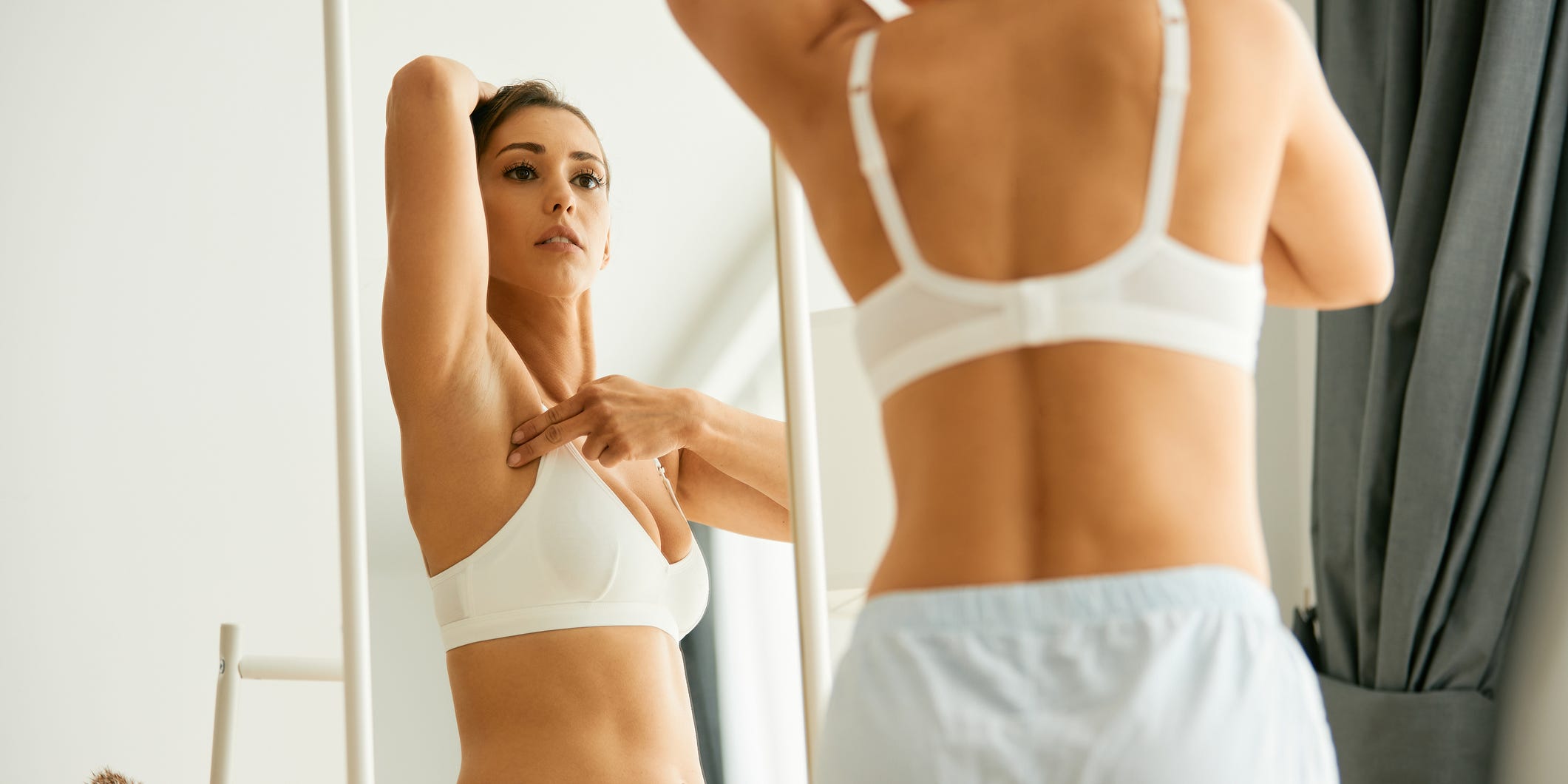
Drazen Zigic/Getty Images
- The most common symptom of breast cancer is a hard, painless lump around the breast area.
- Other common signs of breast cancer are nipple discharge, swelling, a rash, or dimpling.
- Most changes in breasts are not cancer, but you should still see a healthcare provider to be sure.
- Visit Insider's Health Reference library for more advice.
After skin cancer, breast cancer is the second most common cancer in assigned females at birth in the United States. In fact, in the US, those assigned female at birth have about a 13% chance of developing breast cancer.
However, learning to recognize the symptoms of breast cancer can help with early detection, which improves your prognosis. For example, if breast cancer is detected before its spread, the 5-year survival rate is 99%.
Here's how you can figure out the key signs of breast cancer and reduce your risk factors.
Signs and symptoms of breast cancer
The most common symptom of breast cancer is a painless, hard lump around the breast area or under the armpit. However, any type of lump, whether it's soft, tender, or even painful, could be a cancerous mass.
That's why it's not always possible to distinguish cancerous from non-cancerous lumps without a clinical exam, imaging, or breast biopsy, says Mariya Rozenblit, MD, Yale Medicine breast oncologist at the Yale Cancer Center. Therefore, it's important to see a health care professional if you notice any changes in your breasts.
The American College of Obstetricians and Gynecologists no longer recommends people with average breast cancer risk regularly perform self-exams as there is no evidence doing so improves outcomes. However, many people may still want to routinely check their breasts for peace of mind or because they have a higher risk of breast cancer.
Aside from lumps, other signs of breast cancer include:
- Dimpling or puckering on the breast, similar to an orange peel
- Bloody or clear fluid discharge from the nipple
- Skin retraction or inverted nipple
- Noticeable changes in the look or feel of the breast or nipple
- Redness, warmth, or dark spots on the breast area
- Visible rash on the nipple
- Swelling and/or pain in one or both breasts
Breast cancer risk factors
While anyone can develop breast cancer, certain risk factors may increase your likelihood. Some of these include:
- Sex: Those who are assigned females at birth are more likely to develop breast cancer because they have naturally higher levels of the hormones estrogen and progesterone, which increase the risk of breast cancer.
- History of breast cancer: Your risk of breast cancer doubles if you have a first-degree family member, like a parent or sibling, who was diagnosed with breast cancer.
- Reproductive history: Having your menstrual period before age 12 and/or starting menopause after age 55 increases the risk of breast cancer. That's because you've been exposed to the hormone estrogen for a longer period of time.
- Inherited gene mutations: The breast cancer 1 (BRCA1) and breast cancer 2 (BRCA2) gene mutations increase the risk of breast cancer because they can lead to abnormal cell growth.
- Increasing age: As we age, our genes are more likely to become damaged, which increases the risk for breast cancer.
How to reduce your risk of breast cancer
Although some risk factors are beyond your control and cannot be changed, it's still possible for you to reduce your breast cancer risk, says Nicole Williams, MD, breast medical oncologist at The Ohio State University Comprehensive Cancer Center. These include:
- Having a healthy lifestyle: Being physically active, eating a healthy diet, and maintaining a healthy weight can reduce the risk of breast cancer.
- Avoiding alcohol: Alcohol can raise estrogen levels in the body, which may increase the risk of breast cancer.
- Quitting smoking: A large 2017 study found that smoking increases the risk of breast cancer significantly among assigned females at birth, possibly due to the carcinogens found in tobacco smoke.
- Getting regular breast cancer screenings: Clinical breast exams are recommended every one to three years for individuals aged 25 to 40, annual breast exams for ages 40 and above, and mammograms every two years for people aged 50 to 74. However, decisions to get screenings generally depend on your age and risk factors.
- Avoiding postmenopausal hormone therapy (PHT): Combined hormone therapy with estrogen and progesterone increases breast cancer risk. Talk to your primary care provider to weigh the risks and benefits of PHT or discuss non-hormonal options for treating menopausal symptoms.
Insider's takeaway
Experts recommend performing a breast self-exam once a month to get accustomed to the normal look and feel of your breasts.
The most common sign of breast cancer is a hard, painless lump in the breast area or under the armpit. However, other signs of breast cancer can include dimpling of the breast, discharge from the nipple, or a soft, tender mass. Therefore, it's important to see a healthcare provider if you notice any new changes.
In the meantime, you may be able to reduce your risk of breast cancer by living a healthy lifestyle, avoiding alcohol and tobacco, and getting regular screenings.
